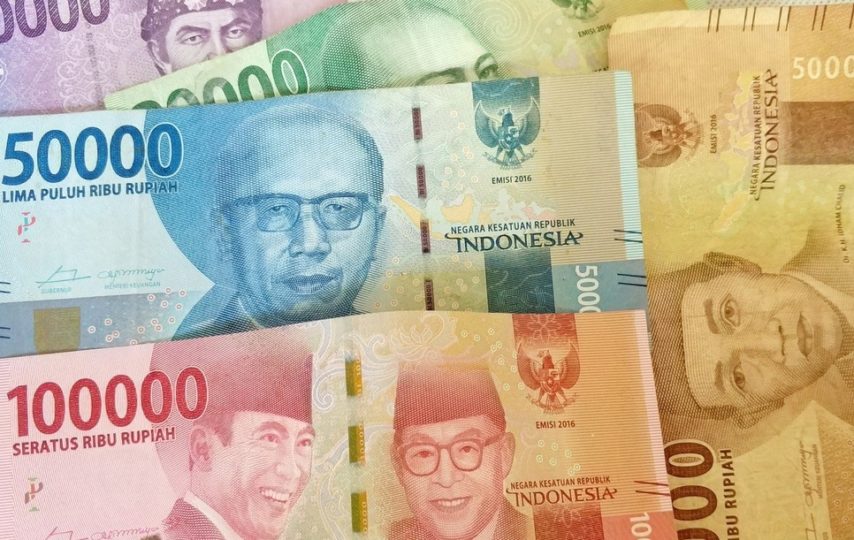It is no secret that the economy has been chaotic in recent years. The world’s economic leaders have tried to make sense of what is happening, and they are still trying to figure it out. As we enter 2021, some currencies will be considered weaker than others. We wanted to take a closer look at these weak currencies, why they are weak, and how this impacts the global market.
Vietnamese Dong
Vietnam’s currency, the Vietnamese Dong, has been on a downward spiral for quite some time. The biggest issue is that Vietnam exports a lot of rice to other countries- over 40% of their total export revenue in 2017 was from agricultural commodities such as rice and seafood. But with inflation rising so rapidly (currently at 12%), the local population can’t afford these luxury goods anymore: they’re too expensive now.
The government needs to control this problem because if things continue like this, it will start impacting many different aspects of life for people outside those who are struggling financially already. If there isn’t an effort made by authorities soon, eventually, more jobs might be lost due to companies moving out or going under – which would only exacerbate the problem.
The government needs to create a plan to combat this now before it’s too late because if they don’t, then in 2021, there might be even more people living below the poverty line. Other countries will follow suit with their currencies depreciating as well.
Sao Tome and Principe Dobra (STD)
The Sao Tome and Principe Dobra is the currency of Sao Tome and Principe (STP). The ISO 4217 code for this currency is STD. There are 100 centimos in a dalasi. It has been pegged to, but not entirely fixed against, the euro at an exchange rate of EUR 0.01 = STD 20000 since 2000; it was then devalued by 50% on January 12th, 2008 due to pressure from IMF loans taken out as part of 2018’s debt relief program with the country’s creditors which required macro-economic reform measures including austerity policies like reduced government spending for them to be repaid – something that had never really happened before. Regulations have also affected the value, with a new law passed in 2014 that requires foreign exchange dealers to charge their customers “an approved rate of profit.”
Iranian Rial
The Iranian Rial is the lowest currency in the world and has had an incredible weakening in recent years, which can be attributed to the sanctions imposed by the United States. The US government is trying to punish Iran for its involvement with nuclear weapons. In 1998, the value of a dollar was 12,000 rials; today, that same dollar would trade at 37 dollars. However, there are some signs of improvement. After protests erupted across Iran over financial issues last year (mostly inflation), President Hassan Rouhani yanked back on austerity measures such as cutting subsidies for food and fuel to help stabilize prices and bring more stability to markets.
Indonesian Rupiah
The currency is the Indonesian rupiah, and it was pegged at a rate of 15 per dollar from 1967 until 1998 when replaced by the new rupia – also known as Rp 2000 or simply ‘rupiah’. From 2005 onwards, Bank Indonesia has pursued an erratic policy with regards to managing fluctuations against other currencies, including those outside South East Asia, which resulted not only in instability but economic insecurity for domestic investors who saw their savings eroded on what would be regarded as one day high rates (11,000) then see them drop drastically just hours later (to say 14,000).
Guinean Franc
The Guinean franc is a currency that the Republic of Guinea has issued. It was linked to the French franc and exchangeable into other central African Francs for over three decades. Still, in 1958 its peg broke the following independence from France with no rate related to any other currencies since then.
Even though the country is rich in natural resources, it has a weak economy. The economy largely depends on exports of bauxite, iron ore, and diamonds.
The Guinean Franc is currently ranked as the fifth least traded currency globally. He has been experiencing severe depreciation for many years now due to various external pressures, including global price shocks compounded by domestic developments that have led to a lack of confidence in the exchange rate regime.
Sierra Leonean Leone
The Sierra Leonean Leone (SLL) is a currency that was introduced in 1971 following independence from the UK. It replaced the East African shilling at par but has been experiencing severe depreciation for many years now due to internal and external factors, including declining exports, political instability, lack of confidence in government policies, and high inflation levels. The country joined OPEC on November 26th, 2012, which will hopefully give it an economic boost and create growth opportunities across all sectors of its economy. The economy largely depends on the export of bauxite iron ore and diamonds. Mining accounts for 90% of the country’s exports.
The country’s main export is diamonds, with exports accounting for approximately 80% of the GDP. The diamond industry has been hit by global demand and competition from lower-cost producers in Africa, such as Botswana, Namibia, and Angola. Economic growth was forecast to slow down significantly in 2016-17 due to low commodity prices that reduced production at mining firms; a high public debt which restricts government spending; growing inflation caused mainly by the limited availability of foreign exchange needed to import goods into the country since 2014 when it lost its preferential trade access arrangement with Nigeria following an election dispute over voting irregularities.
Lao Kip
The Lao Kip is the currency of Laos. The most recent exchange rate was calculated to be: 1 US Dollar = 9,014.61 Laotian Kip. Laos has experienced a difficult economic transition from an agricultural country with socialist, centrally planned economics and little industry to a more modern society that relies principally on trade in goods manufactured elsewhere for export. In 2015-2016 there were signs that this shift may have been accomplished, with growth rates exceeding those of its neighbors by some margin, but these gains could not offset the setbacks caused by natural disasters such as floods and droughts during 2016 when GDP contracted close to zero at -0.05%. This raised questions about how ready it is for possible shocks associated with global financial conditions or commodity prices.
Uzbekistani Som
The currency of Uzbekistan, the sum has been pegged to a weighted basket of currencies since 2005. The central bank manages the peg, and changes are rarely made; there is little movement in the exchange rate relative to other G20 countries. Nonetheless, this means that international transactions must be carried out using US dollars or euros, incurring additional transaction costs for imports and exports.
Inflationary pressures have eased somewhat over recent years but remain higher than those found among most emerging market economies, with annual inflation at around 15%. This, combined with a lack of policy tools – including quantitative easing – means that interest rates cannot act as an effective money management tool. There have also been significant problems associated with corruption and a lack of accountability in certain areas, which has undermined investor confidence.
Paraguayan Guarani
The Paraguayan Guarani is the currency of Paraguay. It was introduced on November 20, 1992, to replace the old currencies used before then. The symbol for this currency can be written as PYG. One US Dollar is equal to 6,605.90 Paraguayan Guarani.
The country suffers an economic downturn due to the fall in commodity prices and reduced export revenue.
Cambodian Riel
The Cambodian Riel is the currency of Cambodia. It was introduced on March 16, 1980, to replace the old currencies used before then. The symbol for this currency can be written as KHR. One US Dollar is equal to 4,115.25 Cambodian Riel.
Ever since it was introduced, Cambodian Riel was always the underdog. One of the reasons for this is that local currency was less popular among locals in Cambodia.
There are currently no reports about how countries’ economies will perform in 2021 and 2020, which means many predictions cannot be confirmed with certainty.













